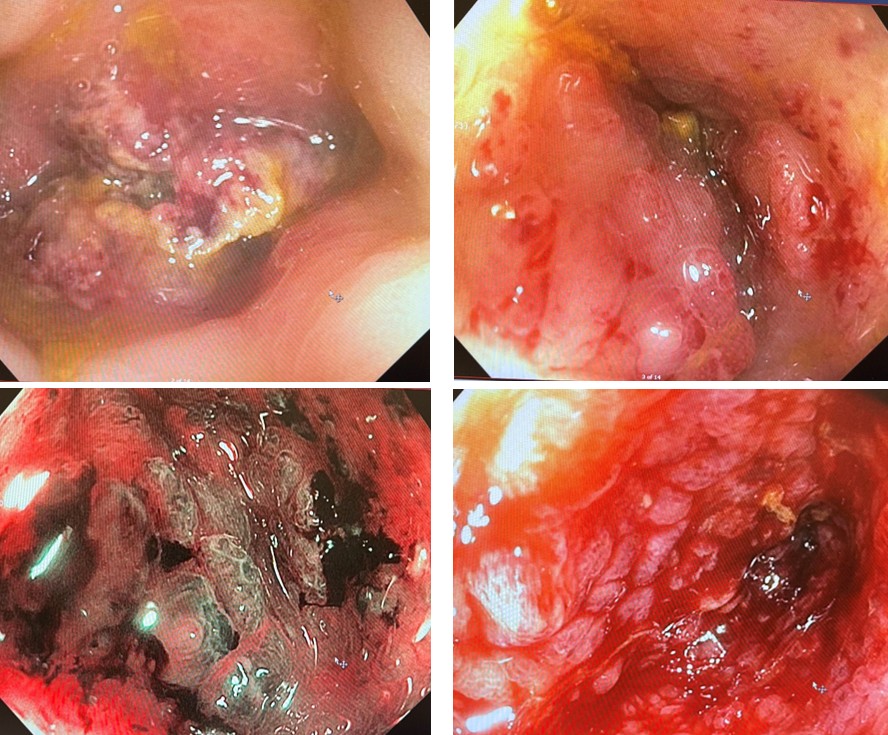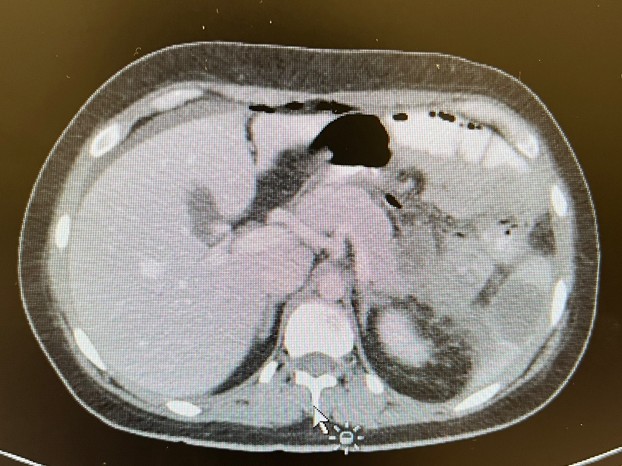Sunday Poster Session
Category: Infections and Microbiome
P1344 - Basidi-oh-no: A One-Health Perspective of Colitis on the Farm
Sunday, October 26, 2025
3:30 PM - 7:00 PM PDT
Location: Exhibit Hall

Allison Chin, MD (she/her/hers)
Florida Atlantic University Charles E. Schmidt College of Medicine
Miami, FL
Presenting Author(s)
Allison Chin, MD1, Gurdeep Singh, DO2, Ilan Aharoni, MD3, Jalal Samhoun, MD4
1Florida Atlantic University Charles E. Schmidt College of Medicine, Miami, FL; 2AdventHealth, Orlando, FL; 3Department of Gastroenterology and Hepatology, AdventHealth Orlando, Orlando, FL; 4Florida Atlantic University Charles E. Schmidt College of Medicine, Boca Raton, FL
Introduction: Basidiobolomycosis colitis is a rare fungal infection with a clinical presentation that can mimic that of inflammatory bowel disease, however, it carries a higher mortality rate of up to 18%. Due to limited population-based data, its epidemiology remains poorly defined. However, the majority of cases have been reported in Saudi Arabia and the southwestern region of the United States. Therefore, this case highlights a unique presentation in Florida, underscoring the need for enhanced surveillance and research.
Case Description/
Methods: A 29-year-old female who lives on a farm with no medical history presented to the emergency department (ED) with left-sided abdominal pain and rectal bleeding. Imaging revealed an inflammatory stricture in the descending colon with possible periappendiceal inflammation. Colonoscopy confirmed the colonic stricture in the descending colon and pathology revealed focal active colitis with ulceration and hemorrhage. She was discharged but returned a week later with persistent symptoms, treated empirically for IBD with steroids and antibiotics and again, discharged. Before she could attend her outpatient appointments, she again returned to the ED due to persistent abdominal pain. Imaging revealed wall thickening mucosal enhancement in the cecum, multicentric colitis and partial obstruction, and after she was started on steroids again, she ultimately underwent a subtotal colectomy with end ileostomy. Within a week of discharge, she again returned with left sided abdominal pain with diagnostic imaging revealing splenic infarct with liquefaction. Post-operative pathology revealed evidence of transmural granulomatous inflammation with giant cells surrounded by an inflammatory infiltrate and special stains highlighting a Zygomycetes fungal species, basidiobolomycosis, with necrosis, neutrophils, eosinophils. Per interdisciplinary discussion with Infectious Disease, the etiology of her colitis was deemed infectious, and she was managed on a prolonged course of itraconazole.
Discussion: The purpose of this case is to highlight a presentation of basidiobolomycosis and emphasize the importance of transdisciplinary collaboration to further investigate the intersection of human, animal, and environmental health. This integrated, One Health, approach to understanding zoonotic and ecological contributors to infection transmission is essential for optimized surveillance, novel mitigation strategies, and policy development.

Figure: Image 1. Colonoscopy

Figure: 2. Splenic infarct with liquefaction
Disclosures:
Allison Chin indicated no relevant financial relationships.
Gurdeep Singh indicated no relevant financial relationships.
Ilan Aharoni indicated no relevant financial relationships.
Jalal Samhoun indicated no relevant financial relationships.
Allison Chin, MD1, Gurdeep Singh, DO2, Ilan Aharoni, MD3, Jalal Samhoun, MD4. P1344 - Basidi-oh-no: A One-Health Perspective of Colitis on the Farm, ACG 2025 Annual Scientific Meeting Abstracts. Phoenix, AZ: American College of Gastroenterology.
1Florida Atlantic University Charles E. Schmidt College of Medicine, Miami, FL; 2AdventHealth, Orlando, FL; 3Department of Gastroenterology and Hepatology, AdventHealth Orlando, Orlando, FL; 4Florida Atlantic University Charles E. Schmidt College of Medicine, Boca Raton, FL
Introduction: Basidiobolomycosis colitis is a rare fungal infection with a clinical presentation that can mimic that of inflammatory bowel disease, however, it carries a higher mortality rate of up to 18%. Due to limited population-based data, its epidemiology remains poorly defined. However, the majority of cases have been reported in Saudi Arabia and the southwestern region of the United States. Therefore, this case highlights a unique presentation in Florida, underscoring the need for enhanced surveillance and research.
Case Description/
Methods: A 29-year-old female who lives on a farm with no medical history presented to the emergency department (ED) with left-sided abdominal pain and rectal bleeding. Imaging revealed an inflammatory stricture in the descending colon with possible periappendiceal inflammation. Colonoscopy confirmed the colonic stricture in the descending colon and pathology revealed focal active colitis with ulceration and hemorrhage. She was discharged but returned a week later with persistent symptoms, treated empirically for IBD with steroids and antibiotics and again, discharged. Before she could attend her outpatient appointments, she again returned to the ED due to persistent abdominal pain. Imaging revealed wall thickening mucosal enhancement in the cecum, multicentric colitis and partial obstruction, and after she was started on steroids again, she ultimately underwent a subtotal colectomy with end ileostomy. Within a week of discharge, she again returned with left sided abdominal pain with diagnostic imaging revealing splenic infarct with liquefaction. Post-operative pathology revealed evidence of transmural granulomatous inflammation with giant cells surrounded by an inflammatory infiltrate and special stains highlighting a Zygomycetes fungal species, basidiobolomycosis, with necrosis, neutrophils, eosinophils. Per interdisciplinary discussion with Infectious Disease, the etiology of her colitis was deemed infectious, and she was managed on a prolonged course of itraconazole.
Discussion: The purpose of this case is to highlight a presentation of basidiobolomycosis and emphasize the importance of transdisciplinary collaboration to further investigate the intersection of human, animal, and environmental health. This integrated, One Health, approach to understanding zoonotic and ecological contributors to infection transmission is essential for optimized surveillance, novel mitigation strategies, and policy development.

Figure: Image 1. Colonoscopy

Figure: 2. Splenic infarct with liquefaction
Disclosures:
Allison Chin indicated no relevant financial relationships.
Gurdeep Singh indicated no relevant financial relationships.
Ilan Aharoni indicated no relevant financial relationships.
Jalal Samhoun indicated no relevant financial relationships.
Allison Chin, MD1, Gurdeep Singh, DO2, Ilan Aharoni, MD3, Jalal Samhoun, MD4. P1344 - Basidi-oh-no: A One-Health Perspective of Colitis on the Farm, ACG 2025 Annual Scientific Meeting Abstracts. Phoenix, AZ: American College of Gastroenterology.
